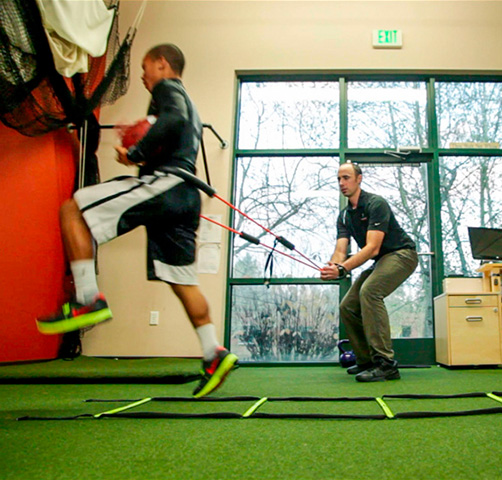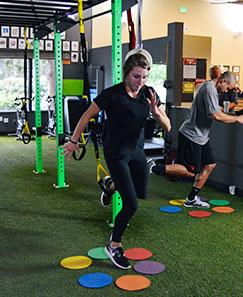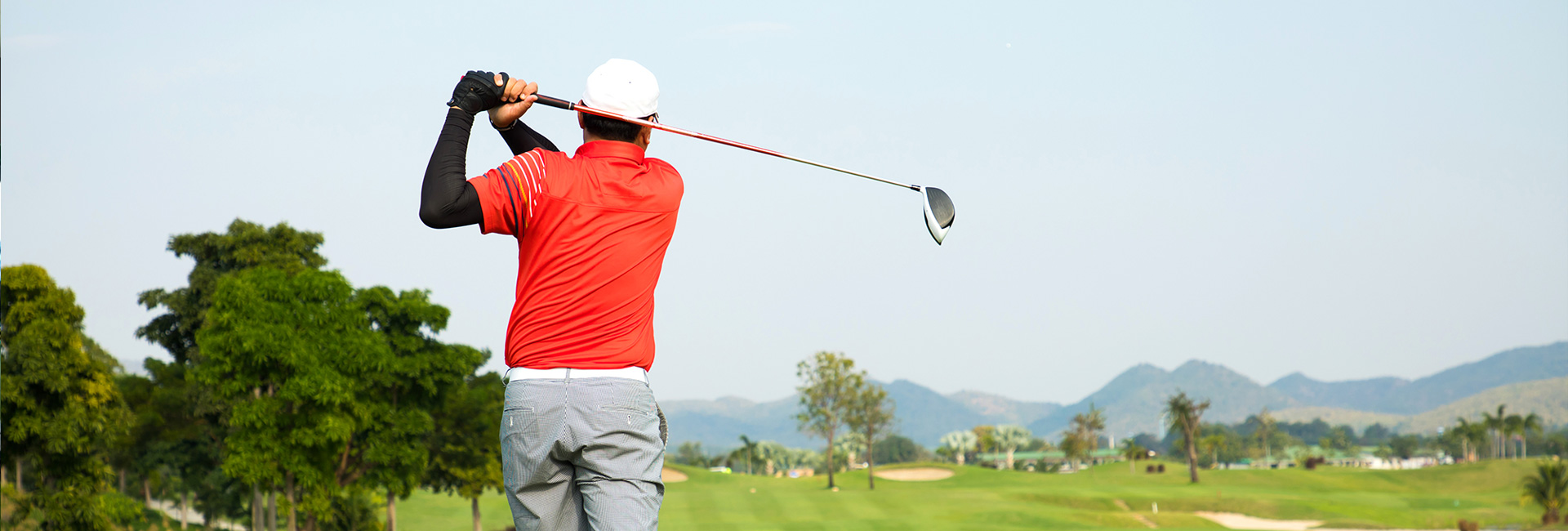Golf courses are a popular place for people to get outside and get moving. According to the National Golf Foundation, 34.2 million Americans ages 6+ played golf – both on-course and off-course in 2019, accounting for 441 million rounds played on-course that year alone.
People love to play golf because it’s challenging and competitive and is typically considered a safe, low-impact activity for people of all ages and abilities. It’s important, however, not to underestimate the impact golf has on the body. Failing to properly prepare for the rigors of 18 holes or of playing multiple rounds in a short period of time, such as while on vacation, can lead to injury.
Golf injuries can range from sudden, acute injuries to more long-term, overuse injuries. Both types can be prevented with proper conditioning and training. A good place to start is to have a Titleist Performance Institute Functional Screen before the golf season is in full swing. The screen, part of our Golf Fitness and Performance Program, is done by a TPI certified expert who will conduct a detailed analysis of your mobility and stability as they relate to the movements specific to the golf swing. It’s an ideal way to learn about your own personal bodily limitations and how they can not only negatively affect your swing, but also potentially lead to injury.
According to the U.S. Consumer Product Safety Commission, more than 122,000 people were treated in hospital emergency rooms, doctors’ offices and other clinics for golf-related injuries in 2016 alone. Additionally, according to data from a study by the British Journal of Sports Medicine, nearly 7 in 10 amateurs and 9 in 10 professionals will suffer a golf-related injury at least once in their lifetime.
The most common golf-related injuries are low-back injuries, followed by elbow injuries and shoulder injuries. These injuries are usually preventable, and the first step is realizing that golf is a ballistic power sport, not just a leisure activity. You can’t simply pick up the driver and start swinging without facing potential consequences. To reduce your injury risk and to improve your performance you must get your body in shape for golf – both before the season and every time you walk onto the tee box on the first hole on game day.
Dedicate yourself to a golf-fitness routine that addresses flexibility, balance, strength, power and more. Additionally, commit to these 3 steps as you pursue your golfing goals.
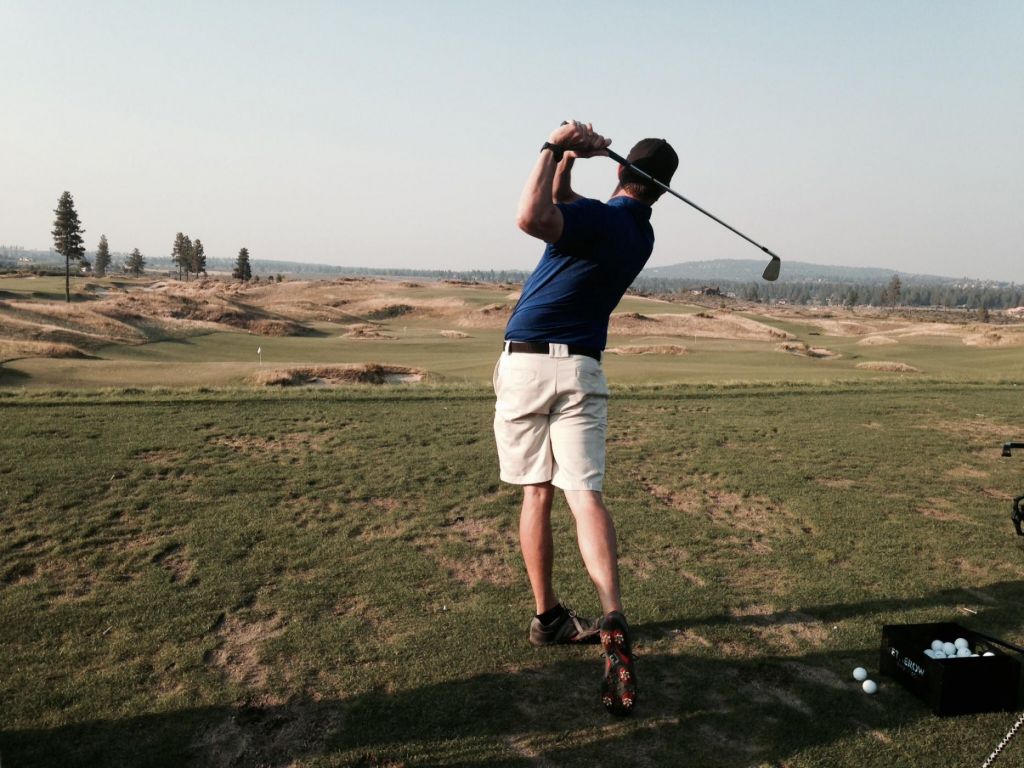
A golf pro can help you with your swing mechanics and proper club fitting and a TPI Certified physical therapist can ensure your body is up for the rigors of performing these mechanics through a round of golf. A full physical assessment from a TPI Certified PT can help a golfer identify imbalances in strength/stability and flexibility/mobility, from which that PT can provide a plan toward addressing specific limitations with an eye toward injury prevention as well as improving performance.
If you are one of the 80 percent of golfers who spend less than 10 minutes warming up, you will be more prone to injury. Instead, develop a regular and reliable dynamic (movement based NOT static stretching) warm-up routine for use prior to each round or practice session that promotes movement awareness, proper timing and rhythm, balance and activation of your decelerators that gradually works your body up to swinging the driver.
Take Time to Learn Proper Mechanics:
Your swing is not just important for accuracy and length. Proper swing mechanic instruction keeps you from placing too much strain on your back, elbows, and shoulders by creating efficient movement and transfer of energy through your entire kinetic chain, from your feet to your hands. Check out these blog posts to learn more about body-swing connections.

Golf: What Keeps Your Lead Arm From Being Straight in the Backswing?
There are a lot of reasons why you might not be able to keep your lead arm straight as you move into the top of
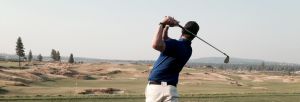
Backswing Pivot – A Need for Hip and Mid-Back Mobility for Golfers
An efficient backswing requires your physical body to do certain things. You can make a backswing without these various physical components in place but the

Downswing Pivot: A Need for Hip and Pelvic Stability for Golfers
After you get to the top of your backswing, you have to get back to the ball. A lot has to happen to do this
From sudden, acute injuries due to faulty movement ability or the lack of awareness with bending and lifting mechanics to the development of long-term, overuse injuries caused by excessive play, lack of flexibility or poor swing mechanics, a round of golf can turn from leisurely to debilitating without proper training and conditioning. Whether you’re an avid golfer or someone who hits the course every now and then, optimal fitness can improve your golf performance and help you prevent golf-related injury.
Physical therapists with specialized training have been working with golfers for decades. Take your game to the next level with physical therapy.
Experts in Sports Injury Recovery
We are committed to providing effective, efficient, and compassionate care to help you return to pain-free sport. Our passion is to help every patient reach their goals on their journey to recovery and optimal performance.
